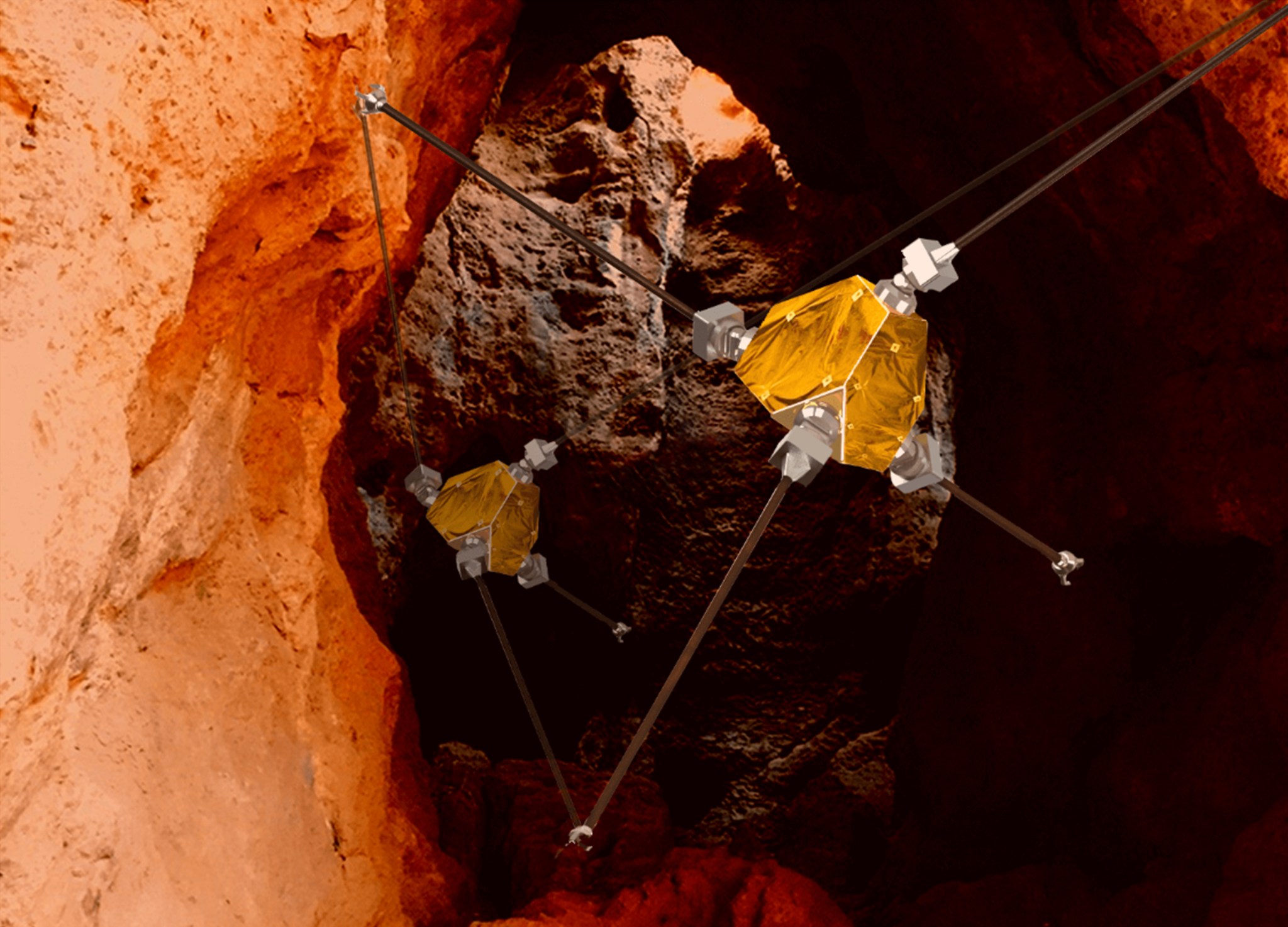Marco Pavone
Stanford University
ReachBot is a mobility and mobile manipulation platform that leverages lightweight extendable booms to achieve large reach with a small footprint, giving it unique access to steep, vertical, and overhanging surfaces in Martian caves. Navigating these surfaces is crucial for bringing instruments in contact with targets of significant geological and astrobiological interest. In Phase I, we investigated key feasibility aspects crucial to a ReachBot’s cave-exploration mission, and in particular we showed that (1) ReachBot has a significantly expanded reachable and wrench workspace compared to alternative designs, (2) lightweight surface grasping solutions with spiny grippers can reliably grasp onto rocky surfaces with passive actuation, and (3) ReachBot’s enhanced mobility and manipulation strength enable new access to significant scientific targets.
In Phase II, we will refine and augment the feasibility studies carried out in Phase I, with a key focus on addressing system robustness and end-to-end concept validation. In particular, we propose four research pillars for this Phase II effort that are crucial to validating ReachBot’s utility in a realistic mission scenario. (I) We will optimize ReachBot’s reachable workspace while maintaining stable configurations by developing a quantitative metric for robustness. This research pillar addresses ReachBot’s ability to overcome the limitations of other robots in navigating cavernous environments. (II) We will develop a strategy to locate, select, and evaluate grasping sites that have a high probability of successful grasping with lightweight grippers. This research pillar supports ReachBot’s advantageous mobility paradigm that relies on local perception, autonomous detection, and adherence to grasping sites on cave walls. (III) We will develop control strategies that minimize risk to bolster mission fulfillment, both by anticipating known risk and mitigating unpredictable risks. For example, we will develop controllers that actively damp oscillations in the booms, making ReachBot more robust to the dynamic response of a sudden grasp failure. (IV) We will study ReachBot’s performance in a realistic mission environment. By outlining a detailed notional mission, we will determine realistic operational constraints for ReachBot. Then, we will conduct field tests to demonstrate the feasibility of our proposed concept for real-world deployments.

































